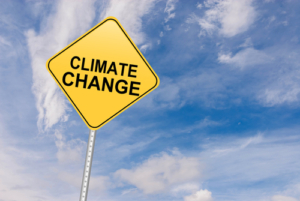The Coming Cold: How Climate Trends Can Impact the Economy and Food Security

As we face increasingly cold temperatures across various regions, many are beginning to wonder: what does this mean for our climate patterns and food security? This question is becoming more pertinent, especially as we approach critical years identified in climate studies.
Understanding the Cold Trend
Recently, queries have surfaced regarding climate data that suggests we are heading towards a colder period. Notably, reports have pointed to significant snow accumulation trends in places like New York City, suggesting that the winter of 2025 could be a turning point. It’s crucial to revisit these temperature patterns, as they indicate shifts that could lead to longer-term climatic changes.
In examining historical snowfall data compiled over decades, we can see that significant snowfalls have been recorded since as early as 1869. The snow accumulation chart highlights the sharp contrasts that climate change narratives often overlook, particularly that record snowfall levels do not always correlate with warming trends. Understanding the fluctuations in weather patterns is vital for anticipating economic impacts, especially in agricultural sectors.
The Risk of Famine Looming
So, why does this matter? The colder climate patterns projected for the coming years could pose severe risks to food production systems globally. There is an argument to be made that if crop yields decline due to unanticipated frost and cooling weather, we may find ourselves battling food shortages and increased prices. Historically, the trend of rising food prices directly correlates with crop failures, leading to famine in some regions.
Let’s not forget the lessons of the past, where misguided policies aimed at addressing climate change have inadvertently set us up for future environmental disasters. For instance, California’s decision to eliminate controlled burns has created conditions that can exacerbate wildfires rather than mitigate them. As seen in Australia, controlled burns are a successful strategy for managing forest ecosystems. When preventive measures are abandoned, the consequences can be both immediate and devastating.
Crop Cycles and Market Predictions
Agriculture is undoubtedly a significant area of concern during these climatic shifts. Take corn production as an example. Historical market cycles can provide insight into future trends, especially as we approach critical years. The agricultural market has always had a way of sensing changes long before they manifest, and current projections indicate the potential for severe agricultural challenges leading into 2029.
Graphs and charts reflecting these market predictions show a stark warning. The economic implications of these shifts cannot be understated—investors and markets alike must prepare for the repercussions down the line.
What This Means for You
At Extreme Investor Network, we believe understanding these climatic trends is crucial for making informed investment decisions. The intersection of economics and climate is complex, and the potential for food shortages adds an additional layer of urgency. As temperatures drop and agricultural production becomes increasingly uncertain, preparedness will be key.
We recommend keeping a close watch on climate data, market cycles, and developing agricultural trends. Preparing for potential hardships doesn’t just mean stockpiling supplies; it ensures you’re informed about the forces at play in the economy.
In conclusion, the shift towards colder climates is not just an environmental concern; it is an economic warning. Stay informed, be prepared, and consider the long-term implications on your investments as we navigate this new climate reality.
For more insights on emerging economic trends and investment strategies amidst changing climates, stay connected with Extreme Investor Network, where we help you navigate the complexities of the economy.

